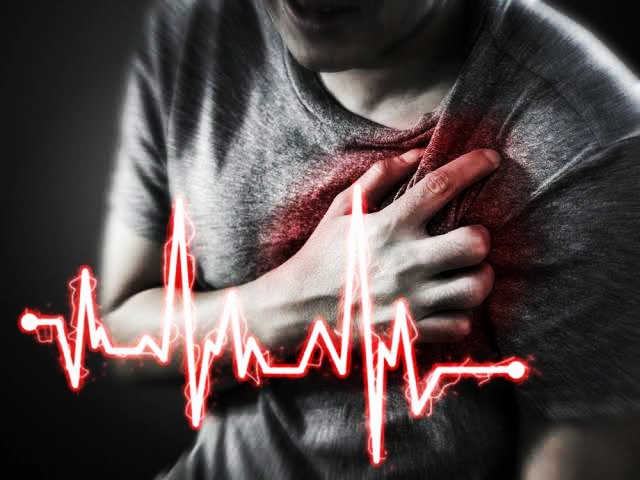
Health news of the week: Cardiac arrest; causes, Prevention and more.
What is Cardiac Arrest?
A cardiac arrest is also called a cardiopulmonary arrest or circulatory arrest and indicates a sudden stop in effective and normal blood circulation due to failure of the heart to pump blood.
Cardiac arrest is different from myocardial infarction or heart attack but may be caused by a heart attack. When the blood flow to the heart is stopped due to narrow or obstructed coronary arteries, a heart attack occurs. This may lead to a cardiogenic shock and cardiac arrest.
What happens in cardiac arrest
Once the usual blood circulation stops, oxygen delivery to all vital organs is also stopped. The organ that is the most quickly and severely affected by this is the brain. The patient loses consciousness and breathing is shallow and minimized. If the cardiac arrest persists for over five minutes, permanent brain damage may occur.
The pulse that is usually seen in the carotid artery in the neck as well in the wrists and ankles is lacking.
Cardiac arrest may lead to sudden cardiac death or SCD. Heart attack is an important cause of SCD.
Causes of cardiac arrest
Exposure to heavy wildfire smoke may raise risk of out-of-hospital cardiac arrest
Some of the most important causes of cardiac arrest include:
Heart attack or myocardial infarction (seen in 30% of cases)
Cardiac anatomical abnormality
Cardiac rhythm disturbance or arrhythmia. The most common fatal abnormal heart rhythm is ventricular fibrillation.
Cardiomyopathy
Sepsis and major infection
Drug overdose
Major injury and blood loss. Lung or heart injury may also lead to cardiac arrest.
Advanced cancer
Extremely high or low body temperature
Extremely high or low blood level of potassium
Severe oxygen deprivation
Pulmonary embolism
What needs to be done?
A cardiac arrest is a medical emergency. For every minute that a person is in cardiac arrest before arrival of a defibrillator, the chances of survival are reduced by about 10%. Cardiopulmonary resuscitation is attempted along with defibrillation of the heart to try and reinstate the heart’s pumping rhythm.
Prevention:
Prevention of an out-of-hospital arrest
One of the first steps in preventing a sudden cardiac death (SCD) due to cardiac arrest is recognising cardiac chest pain. In most victims, there is a positive history of cardiac disease as well as warning signs such as chest pain during the hour before arrest. Recognizing cardiac chest pain and rapidly contacting the emergency services can prevent full blown cardiac arrest and reduce the risk of SCD.
Most patients who have coronary artery disease or cardiomyopathy are at a high risk of cardiac arrest and SCD. SCD can also be caused by genetic heart conditions such as the long and short QT syndromes and Brugada syndrome.
Other warning symptoms, aside from chest pain, that precede a cardiac arrest include palpitation, pressure and tightness in the chest, pain or discomfort in one or both arms or the back, the neck, or the jaw, light-headedness, shortness of breath, sudden nausea, vomiting and hot or cold flushes.
Prevention of in-hospital cardiac arrest
The survival rates of in-hospital cardiac arrest are as low as 20% in most set-ups.
Prevention of these arrests involves improving factors such as staff education, the monitoring of patients, recognition of patient deterioration and management of impending arrest.
Adults with an in-hospital cardiac arrest should be monitored for ventricular fibrillation and defibrillated immediately.
Deteriorating patients should be identified. This includes patients with failing respiratory, cardiovascular, and nervous systems who may have an abnormal heart rate, breathing rate or blood pressure reading that could be an early sign of deterioration.
Cardiopulmonary resuscitation should be attempted even when the underlying condition and general health of the patient makes success unlikely.
Critically ill patients or those at risk of clinical deterioration should be placed in areas where the level of care is higher such as the intensive care unit.
Critically ill patients need continued monitoring of their vital signs such as their pulse, blood pressure, respiratory rate, consciousness level, temperature and blood oxygen.
The hospital needs to have a policy that clearly states responses to deteriorating patients need to be timely and appropriate.
All staff should be trained in the recognition, monitoring, and management of critically ill patients in cardiac arrest.
Cardiac Arrest Treatment
A cardiac arrest is a sudden failure of the heart to pump blood around the circulatory system to the vital organs. This is a serious medical emergency. For every minute that a person is in cardiac arrest before a defibrillator is available, the chances of survival are reduced by about 10%. Cardiopulmonary resuscitation along with defibrillation of the heart can start the heart’s pumping rhythm again.
Cardiac arrest outside of hospital
Cardiac arrest that occurs outside of a hospital setting mostly follows a heart attack or a severely altered heart rhythm caused by ventricular fibrillation. In these cases, defibrillation is key to managing the arrest. Defibrillation equipment is available in most ambulances and needs to be administered as soon as possible.
Cardiac arrest inside hospital
Treatment of cardiac arrest that is given inside hospitals follows advanced life support protocols. In the United States, protocols are outlined by the Advanced Cardiac Life Support for adults, by the Pediatric Advanced Life Support for children and by the Neonatal Advanced Life Support for newborns.
All management of cardiac arrest begins with CPR or cardiopulmonary resuscitation and defibrillation. Hospitals’ protocols for resuscitation are often initiated by a Code Blue which indicates the onset of cardiac arrest or respiratory failure. For adequate CPR, three things need to be ensured:
A = Airways are opened by tilting the head back and lifting the chin
B = Breathing is checked for by looking for and listening out for signs of breathing
C = Circulation is attempted with cardiac compression
In hospitals, the opening of airways can be secured with the use of an endotracheal tube. Intravenous fluids and medications that stimulate the heart and make it pump can also be used and ventilation can ensure that adequate oxygenation and circulation is maintained. Medications used to make the heart pump include adrenaline and dopamine or dobutamine.
Patients with ventricular fibrillation may have unstable or pulseless ventricular tachycardia that must be immediately treated with defibrillation. Medications such as amiodarone may also be administered. In the complete absence of any electrical activity of the heart, epinephrine and atropine are used to bring back the heart’s pumping action.
Before cardiac activity is restored, some set-ups may induce hypothermia or cool the body. This is called therapeutic hypothermia and helps to decrease the likelihood of ischemic injury following a period of impaired blood flow.
Immediately after the cardiac arrest is managed, there is a risk of recurrence. Preventive management with medications and life support aims to reduce this risk.



























Post Comment